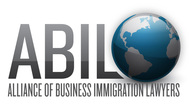The ICE Deputy Director, Thomas Homan, has said he wants to ramp up work site enforcement by 400% and California, a “sanctuary” state, has seen the effects. As we recently blogged, ICE served notices to 122 southern California companies. As a result, companies are conducting internal I-9 audits to ensure they have their ducks in a row.
We recently completed several internal I-9 audits for corporate clients and wanted to share some practical tips on how to avoid common mistakes to ensure compliance with immigration rules. Noncompliant I-9 forms may lead to civil and, in some cases, even criminal penalties. As such, a practice of noncompliance can become extremely expensive, especially in the current age of increasing compliance and enforcement efforts.
| 1. Wrong Form Edition: As of September 18, 2017, all I-9s must be completed on the edition date of 07/17/17. Therefore, Form I-9 with the edition date of 11/14/16 is no longer accepted. This can be difficult as the only difference on the face of pages 1 to 2 is the edition date located on the bottom left hand corner. Because they are so similar, employers did not notice when page one (employee’s portion) was completed with the correct form edition while page two (employer’s portion) was completed with the 11/14/16 edition, a noncompliant form.
2. Over Documentation: This is a non-correctable mistake but can lead to issues both from ICE but also anti-discrimination actions. Pursuant to federal law, an employer should only accept either a List A document or a combination of List B and List C documents, but not both. A company will often try to show compliance by collecting documents from List A, List B AND List C but this results in many over-documented I-9 forms and can run the risk of exhibiting a pattern or practice of discrimination which could result in civil penalties.
3. Inconsistent Record Keeping: We found that many companies are inconsistent with their I-9 maintenance. Some departments would keep copies of documents presented in support of the employee’s work authorization while others only maintain the actual I-9. This is problematic as the practice can be seen as discrimination and if audited, this form of discrimination could also lead to civil and criminal penalties.
4. Alterations: Forms with white outs, scratch outs, and black outs are all too common. However, concealment of a correction can lead to increased liability under federal law.
5. Reverification: Employers must reverify employees on or before employment authorization expires. However, U.S. citizens and permanent residents are not subject to reverification (except permanent residents who submitted temporary I-551 stamps). The reverification must be done on the current Form I-9 edition at the time of the reverification. We noticed that employers either did not reverify, reverified after the employment authorization expired, or on the wrong form edition which all result in a noncompliant I-9.
|


 RSS Feed
RSS Feed
